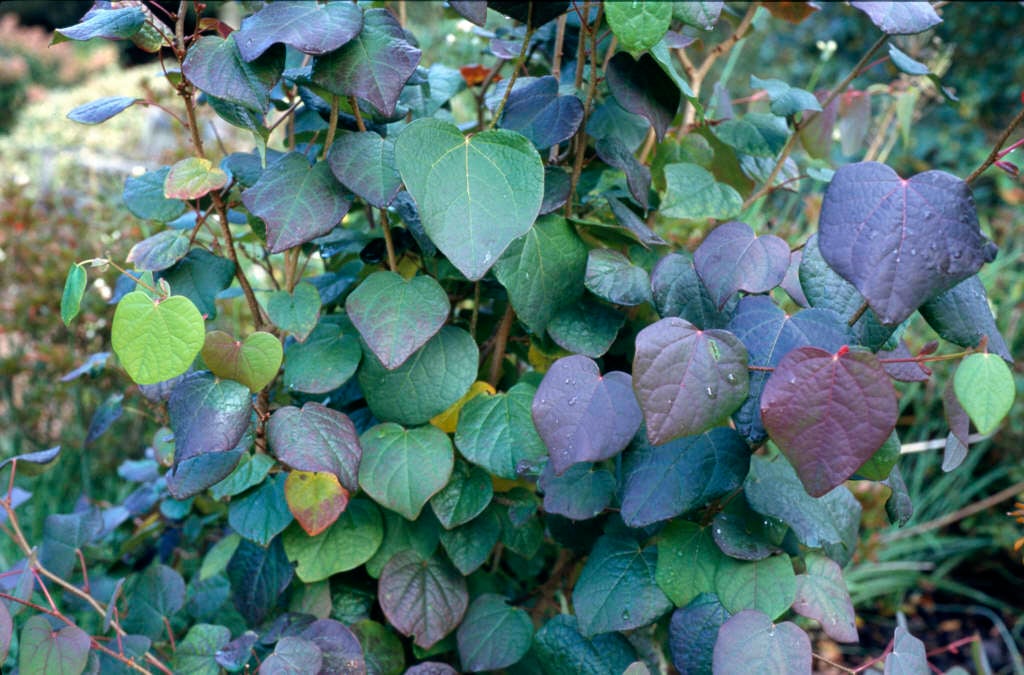Disanthus cercidifolius
long-stiped disanthus
A medium-sized deciduous shrub with wide-spreading branches and large, rounded, heart-shaped leaves turning deep crimson, purple and orange in autumn. Flowers 2cm in width, deep maroon, with five narrow petals
Size
Ultimate height
1.5–2.5 metresTime to ultimate height
10–20 yearsUltimate spread
1.5–2.5 metresGrowing conditions
Moisture
Moist but well–drainedpH
Acid, NeutralColour & scent
| Stem | Flower | Foliage | Fruit | |
| Spring | Green | |||
|---|---|---|---|---|
| Summer | Green | |||
| Autumn | Purple | Red Orange Purple | ||
| Winter |
Position
- Full sun
- Partial shade
Aspect
South–facing or East–facing
Exposure
Sheltered Hardiness
H5Botanical details
- Family
- Hamamelidaceae
- Native to GB / Ireland
- No
- Foliage
- Deciduous
- Habit
- Bushy
- Genus
Disanthus are large deciduous shrubs with broadly heart-shaped leaves which colour well in the autumn, when the paired, small, starry, 5-petalled maroon flowers open
- Name status
Correct
- Plant range
- China, Japan
How to grow
Cultivation
Grows well in humus-rich, lime-free soil. May need protection from strong winds and the foliage may be damaged by late frosts
Propagation
Propagate by seed in an outdoor seedbed in spring or autumn or by layering in spring
Suggested planting locations and garden types
- Cottage and informal garden
- Low Maintenance
- Flower borders and beds
Pruning
Pests
Generally pest-free
Diseases
Generally disease-free
Love gardening
Sign up to receive regular gardening tips, inspiration, offers and more
View our Privacy Policy
Get involved
The Royal Horticultural Society is the UK’s leading gardening charity. We aim to enrich everyone’s life through plants, and make the UK a greener and more beautiful place.
